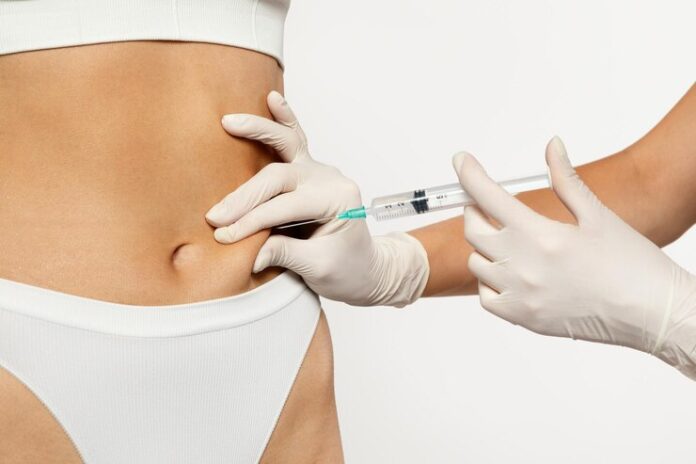In the ever-evolving world of aesthetic medicine, the quest for youth and symmetry has led to the development of various minimally invasive procedures that offer rejuvenation without the need for surgery. Two of the most popular options for restoring volume and contouring the face are fat injections and dermal fillers. While they may seem similar in their objectives, they are fundamentally different in composition, technique, longevity, and results. Whether someone is exploring Fat injections in Dubai or considering dermal fillers for a quick facial refresh, understanding the nuances between these two treatments is essential for making an informed decision.
What Are Fat Injections?
Fat injections, also known as autologous fat transfer or fat grafting, involve removing fat from one part of the patient’s body, such as the abdomen, thighs, or flanks, via liposuction. This harvested fat is then purified and reinjected into areas requiring volume enhancement, such as the cheeks, under-eye hollows, temples, hands, or even the buttocks.
What Are Dermal Fillers?
Dermal fillers, on the other hand, are synthetic or naturally derived substances that are injected beneath the skin to restore lost volume, soften wrinkles, and enhance facial features. The most common type of filler is hyaluronic acid (HA), a substance naturally found in the skin that retains moisture and adds plumpness. Other types of fillers include calcium hydroxylapatite, poly-L-lactic acid, and polymethylmethacrylate (PMMA) microspheres.
Key Differences Between Fat Injections and Fillers
While both fat injections and fillers aim to add volume and rejuvenate the face, their differences are significant and worth examining in detail.
Source of Material
- Fat Injections: Use the patient’s own fat harvested from another body area. This makes it an autologous (self-derived) procedure.
- Fillers: Composed of biocompatible materials, often synthetic or naturally occurring substances like HA.
Procedure Complexity
- Fat Injections: Require two steps – fat extraction via liposuction and then re-injection. This makes the procedure more invasive and time-consuming.
- Fillers: Straightforward injection process. No donor site or liposuction is involved.
Naturalness of Outcome
- Fat Injections: Generally provide a softer and more natural look, especially in areas like the cheeks and under eyes. They also improve skin quality due to stem cells in fat.
- Fillers: Provide immediate volume and structure, but can sometimes appear overdone if not administered correctly or if too much product is used.
Volume Restoration vs. Sculpting
- Fat Injections: Ideal for larger volume restoration, such as sunken cheeks or severe volume loss in the midface or temples.
- Fillers: Best for precise sculpting and contouring of smaller areas like the lips, nasolabial folds, or jawline.
When to Choose Fat Injections
Fat injections are particularly advantageous when:
- There’s a need for substantial volume restoration.
- The patient desires long-lasting or permanent results.
- There’s excess fat in other areas that could be put to good use.
- The goal is to enhance skin quality alongside adding volume.
- The patient prefers an all-natural approach without synthetic substances.
Combination Approaches
Interestingly, some practitioners may recommend a combination of both treatments to maximize results. For instance, fat grafting can be used for overall volume, while fillers can refine and sculpt more precise areas such as the nose or chin. However, these combined techniques require significant skill and careful planning.
Considerations Before Choosing Either Option
Though both procedures have high satisfaction rates, they are not one-size-fits-all. Here are a few factors to consider:
- Skin Type and Elasticity: Affects how well the fat or filler integrates.
- Age and Lifestyle: Smokers and older individuals may have lower fat survival rates.
- Desired Duration: Short-term enhancement vs. long-term transformation.
- Health Conditions: Some autoimmune or metabolic issues might influence candidacy.
FAQs
Is fat injection safer than dermal fillers?
Both procedures are generally safe when performed by experienced professionals. However, it carry slightly more complexity due to the liposuction component. The safety of each depends on individual health and the skill of the practitioner.
Can fat injections be reversed like dermal fillers?
No, fat injections are not reversible. In contrast, certain dermal fillers like hyaluronic acid can be dissolved using enzymes like hyaluronidase. This makes fillers more flexible for first-timers or those unsure about results.
Do fat injections improve skin texture?
Yes. Fat contains stem cells and growth factors that can enhance skin tone and texture, offering additional rejuvenation benefits beyond volume restoration.
Are repeat treatments necessary with fat injections?
In many cases, yes. Some of the transferred fat may not survive the first time. Touch-up sessions may be required to achieve or maintain optimal results, especially in the first year.
Conclusion
Though both fat injections and dermal fillers serve the primary function of restoring facial volume, their differences lie in their source materials, procedure complexity, longevity, and applications. Fat injections offer a more natural, long-term solution, while fillers provide convenience and precision with minimal recovery. Choosing between the two—or using a combination—depends entirely on the individual’s aesthetic goals, anatomy, and lifestyle preferences.
































